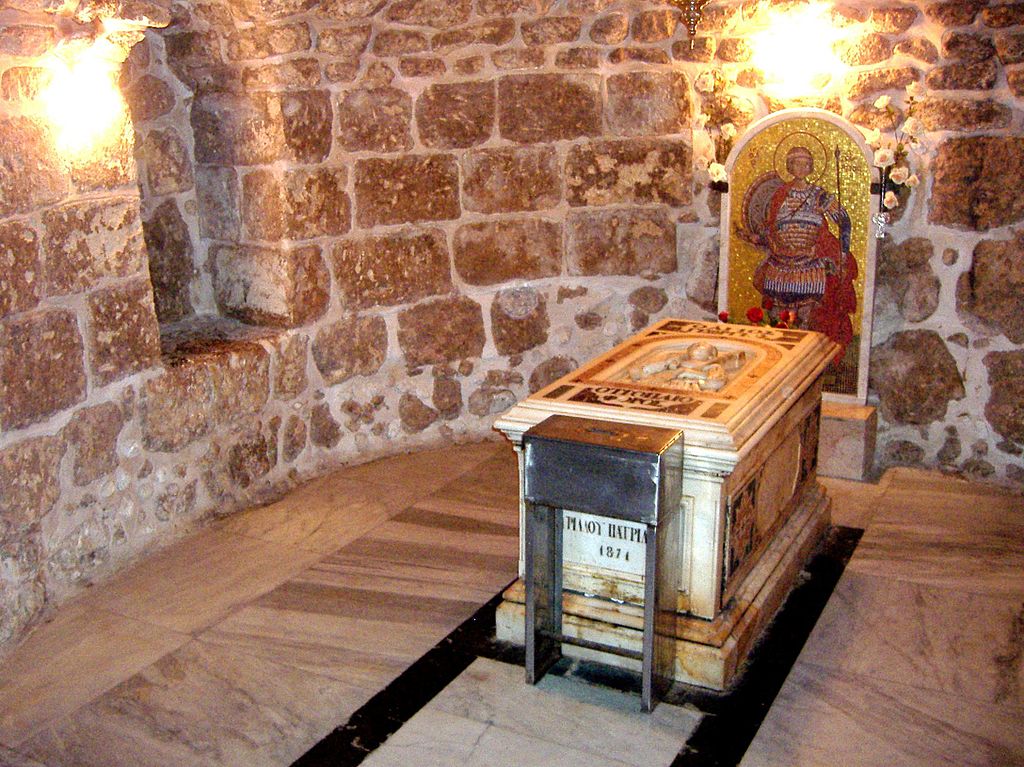Pope Francis — Jorge Mario Bergoglio — celebrated April 23, 2019, the martyr Saint George, his Patron Saint, making it a holiday in the Vatican.
November 4, Saint Charles’ day, was a holiday under John Paul II-Karol Wojtyla, and <March 19> Saint Joseph’s day, under Pope Benedict XVI-Joseph Ratzinger.
A Gift for Young People
On this occasion, it was the Pope who gave a gift to thousands of young people: the Papal Almonry offered 6,000 Rosaries of the Panama 2019 WYD to young people of Milan, on pilgrimage to Rome with their Archbishop, Monsignor Mario Delpini, who presided over the Mass at Saint Peter’s this April 23. On Wednesday, April 24, they will participate in the General Audience in St. Peter’s Square.
Alessandro Gisotti, Pope Francis’ spokesman, pointed out that the Pontiff “asked young people to remember him especially in their prayer, entrusting him in particular to the Virgin Mary, in these days preceding the month of Mary.”
The Rosaries, thousand of which were also handed out by the Pope on Palm Sunday, were made in the Holy Land for Panama’s WYD, following an action already carried out by Swiss Bishop, Monsignor Pierre Burcher.
After Panama’s WYD, Bishop Burcher confided to Zenit that “the Saint John Mary Vianney Association of Lausanne signed a convention with Caritas-Jerusalem for the production of 1.5 million Rosaries in olive wood by needy families of Bethlehem!”
Anniversary of the Holy Father’s Religious Profession
Easter Monday, April 22, was also the anniversary of the Pope’s religious profession as a Jesuit.
He entered the Society of Jesus on March 11, 1958, and was ordained priest on December 13, 1969: this year will be the 50th anniversary of his Ordination!
He made his final religious vows — Solemn Profession — on April 22, 1973.
Saint George of Lydda (around 275/280 – April 23, 303), is a 4th-century martyr and Patron Saint of Christian chivalry of the kingdom of Great Britain since the year 800, of Georgia that bears his name, and of . . . armorers.
He is primarily represented as a knight that brings down a dragon, allegory of the victory of good over evil.
According to its Greek name, Lydda is the city of Lod, in the center of Israel, and today it has some 67,000 inhabitants. In the New Testament, Lydda is mentioned in relation to Peter, who healed a paralytic there (Acts 9:32-38).
George of Lydda was born in Cappadocia ((Present day Turkey), in a Christian family. A military man, he became an officer in the Roman army and was elevated by Emperor Diocletian to the first ranks of the army, reports the “Golden Legend” of Jacques de Voragine, O.P.
Roman Soldier Martyred under Diocletian
According to the Legend, he went through the city of Selene, in the Roman province of Libya, on his white horse. The city was being terrorized by a dragon, which devoured the animals and exacted a daily tribute of the inhabitants of two young people by drawing lots.
George arrived the day the draw fell on the king’s daughter, and at that moment she was going to be the victim of the monster. George fought the dragon in a fierce battle. With Christ’s help and after making the sign of the cross, he pierced it with his lance. The Princess was safe and sound.
The inhabitants believed in the Risen Christ and asked for Baptism.
In fact, affected by military orders in difficult regions, such as Syria, Libya, Palestine, and Egypt, he aroused the fury of Emperor Diocletian because he protected the Christian populations.
He was ousted and arrested but continued to give witness, in prison, to the Risen Christ, so much so that his guard embraced the Christian faith, as did the Emperor’s wife, the Persian Princess Alexandra.
Saint George suffered numerous tortures but survived them and, eventually, was decapitated on April 23, 303.

Tomb Of St. George In Lod (Israel) @ Public Domain
Saint George: Pope Francis’ — Jorge Mario Bergoglio’s — Feast Day
And the Anniversary of His Religious Profession


